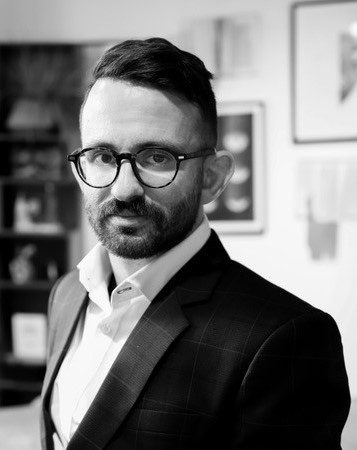In the wake of the October 7 attacks against Israeli civilians by the designated terrorist organization Hamas, during which over 1,500 people were killed and saw the outbreak of a war that has seen thousands more die, it’s imperative to ask ourselves how groups like Hamas so successfully fund their activities.

Lev Yuriditsky
First and foremost, it’s important to note that terror financing can be as complex a subject as terrorism itself in light of the variety of such groups in terms of their ideologies, size, territorial control (or lack thereof), and political utility to other countries and actors.
For instance, some terror groups operate out of hidden bases in rural parts of a country and carry out sporadic attacks against government and security targets, while others may control and administer sizable civilian populations, forcing the world to interact with them — even if on a highly limited basis — as the de-facto “leader” of such territory, such as Hamas in Gaza, al-Shabaab in Somalia, and the Taliban in Afghanistan.
Some of the most common forms of terror financing include:
- illicit businesses, such as narcotics, human, or and/or arms trafficking
- legitimate businesses that transfer some or all of their profit to terror groups that either own or are supported by such business
- “tax” collection, a revenue strategy especially common among terror groups that control large swathes of territory or populations, such as Hamas, Hezbollah, al-Qaeda (AQ), ISIS, ELN in Colombia, and al-Shabaab
- charitable donations, usually by charities set up by supporters of the terror group, with donors in some instances unaware of where there money may be going
- state sponsorship, referring largely to a situation in which a government funds a terror group in order to use them to further own geopolitical goals, such as Iran’s support of Hamas and another Gaza-based terror group, Palestinian Islamic Jihad (PIJ), against Israel
Of course, many groups will use all of the above means of terror financing. Interestingly, one form of funding that often gets disproportionate coverage vis-à-vis terror financing is crypto currency. In fact, crypto currency is easily traceable, with exchanges quite active in preventing their use by terror groups. Hamas, for example, were clearly alerted to this obstacle, suspending their public-facing crypto funding activities after four years of soliciting donations via bitcoin because of the risk of their donors de-anonymized. Although some politicians and major news outlets alleged that Hamas and PIJ raised over 130 million USD in crypto currency between August 2021 and June 2023, this figure was immediately challenged by experts. Indeed, most estimates place crypto as the source of just around 1% of terror proceeds, making it nearly negligible.
Continuing with the example of Hamas, they receive charitable donations, state sponsorship from Iran and Qatar, and also collect taxes from the civilian population under their control, much like any ruling actor does. Each of the above means of financing terror comes with unique challenges when we seek to prevent or reduce them.
For instance, when a terror organization controls territory and collects taxes, it becomes virtually impossible for outside actors to cut off this revenue. The only option is simply isolating the territory to a point where they cannot trade with the outside world, which in theory strangles the flow of money to their leadership. That said, this is often practically difficult and at times deemed too inhumane by the international community. Indeed, when ISIS controlled oil refineries in Syria, even their rivals in the Assad-led government traded with them as they had no choice. Similarly, al-Shabaab controls much of Somalia’s coal trade, forcing interested buyers in neighboring countries to purchase the important commodity from the terror group. With over two million residents, Gaza has its own active economy that trades both domestically and internationally, so naturally Hamas profits off of this, with even Israel and Egypt, both of which have implemented economic blockades on the enclave, unable to completely cut off the economy. Indeed, doing so is also unwise as it would lead to an even greater humanitarian crisis along the borders as a result.
Similarly, countering state sponsorship of terrorism is an incredibly challenging and politically delicate matter, which can explain why such few countries are on the US Treasury Department’s “State Sponsors of Terrorism” list: Syria, Iran, Cuba, and North Korea. The reason for this is that most governments do support terror groups in adversarial countries, a situation that would force the US to also include allies on this list and potentially target them with sanctions. For instance, it is well documented that Turkey supported AQ-affiliated groups in Syria in their fight against the Assad government and that Pakistan supported the Afghan Taliban. The other challenge is that it’s often done under diplomatic cover and with the support of governmental institutions, making it both difficult to detect and allowing for large sums of money. These funds are diverted to a variety of activities, from travel to training to arms and even full-time professional staff to manage the network or salaries for the leadership.
Likewise, charitable donations and legitimate businesses that fund terror groups are also difficult to detect as they are intentionally established to appear entirely legitimate — effectively hiding in plain sight. Charities may have benevolent names, such as “The Holy Land Fund” and businesses may be run of the mill operations that simply happen to be owned by supporters of a terror group or even family members or friends, which requires enhanced due diligence to detect.
Finally, it goes without saying that illicit businesses that support terror groups come with their own unique challenges to identify. Instead of hiding in plain sight, such funding is shrouded in darkness, often engaging in complicated methods to integrate the funds into the legitimate economy, as with any traditional money laundering operation. This often requires external facilitators who either are moral supporters of the group or are paid or otherwise coerced to support the laundering of funds. Depending on the sum of money, this could include the utilization of corrupt financial or legal professionals, businesspeople, money mules, or a combination of the above.
With all that said, it is possible to identify terror financing risks during, among others, the customer onboarding or client monitoring processes and due diligence on potential investors or investments and it’s incumbent upon company leadership and compliance professionals to do so. Indeed, such a process is not so different from the identification of other risks. Of course, this starts with conducting a full profile and extended network analysis, including business partners, friends, family, and other associates of any potential prospects, partners, investors, and so on. This analysis involves identifying ideological orientations that could align with radicalism or even direct association with terror groups or individuals sanctioned for terror-related activities.
It’s also important to understand if the relevant individual or company operates in areas under control of terror organizations as this places them at a high risk for terror financing, directly or indirectly, for some of the reasons addressed above. Similarly, it’s essential to verify that one’s source of wealth and business activities align and validate each other while also reviewing and checking connections and support for charitable organizations, especially ones that donate to or operate in areas under control or terror groups. We should always confirm where charitable donations are going and who is handling their proceeds.
As previously mentioned, on a global scale terror financing is exceptionally complicated to address. The major terror networks are powerful and well connected in sympathetic communities and within the leadership of supportive governments with deep pockets and resources. They often control considerable territory, allowing them to function as de facto governments while also controlling innocent civilians, allowing them to also exploit humanitarian communities. Beyond that, terror financing is often intimately intertwined with money laundering, a crime that is detected in less than 10% of cases. However, companies and professionals not only can make a significant impact and put a meaningful dent in terrorist coffers by making sure to, among others, fully vet their clients, investments, investors, and partners, but it’s a moral and professional obligation to do so.


